Balancing nutrition with a packed schedule can feel impossible, especially when you want meals that honor your Kannada heritage. This guide is designed for busy professionals, working parents, and anyone juggling multiple responsibilities who refuses to compromise on healthy eating or the comfort of familiar South Indian flavors.
You’ll discover how to create a balanced diet for busy professionals that includes traditional Kannada favorites without spending hours in the kitchen. We’ll walk you through essential nutrition components that work with your lifestyle, plus smart meal planning strategies for busy schedules that actually stick.
The guide covers practical solutions including a complete 7-day Indian diet chart featuring dishes like ragi mudde, bisi bele bath, and sambar alongside modern meal prep techniques. You’ll also learn how to address common nutritional gaps like protein and Vitamin B12 through vegetarian protein sources India offers, plus budget meal planning tips that keep costs low while maximizing nutrition and flavor.
Essential Components of a Balanced Kannada-Friendly Diet
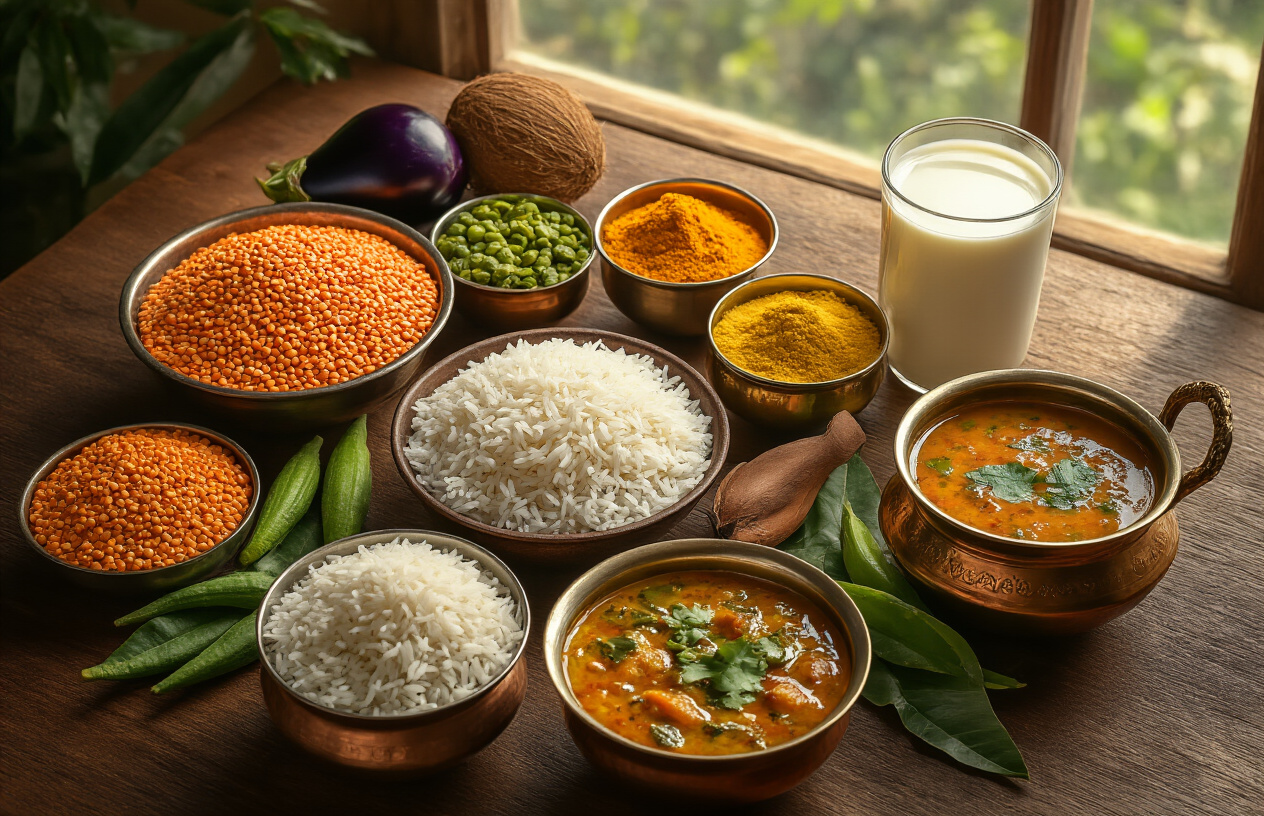
Traditional Ingredients That Boost Nutrition
Karnataka’s culinary heritage offers remarkable nutritional powerhouses that perfectly align with modern health needs. Ragi (finger millet) stands out as a calcium and iron-rich superfood, strengthening bones while supporting blood health for busy professionals. Traditional ingredients like tamarind in saaru provide antioxidants and digestive benefits, while coconut adds healthy fats and flavor to dishes like tambuli and kosambari.
Whole Grains and Millets for Sustained Energy
Millets represent the cornerstone of a balanced kannada diet plan, offering superior nutrition compared to refined grains. These ancient grains, including finger millet (ragi), pearl millet (bajra), and foxtail millet, provide sustained energy through their low glycemic index properties. Rich in fiber, magnesium, phosphorus, and B vitamins, millets help stabilize blood sugar levels and maintain consistent energy throughout demanding work days, making them ideal for busy lifestyle healthy eating.
Protein-Rich Lentils and Legumes
Traditional Karnataka cuisine brilliantly incorporates protein-dense legumes that serve as excellent vegetarian protein sources india. Toor dal forms the foundation of nutritious huli (sambar), while moong dal creates light yet protein-packed dishes like hesaru bele payasa. Kosambari, a refreshing salad made with soaked lentils, delivers complete proteins alongside digestive fiber, perfectly supporting the nutritional needs of busy professionals seeking convenient yet wholesome meal options.
Seasonal Vegetables and Fruits for Vitamins
Karnataka’s traditional approach emphasizes seasonal produce to maximize vitamin and mineral intake while supporting local agriculture. Leafy greens used in dishes like tambuli provide essential nutrients and cooling properties, while vegetables incorporated into akki rotti and huli ensure varied vitamin profiles throughout the year. This seasonal eating pattern, deeply rooted in karnataka cuisine nutrition, naturally provides the diverse micronutrients needed for optimal health while keeping meal costs manageable for budget meal planning tips.
Smart Meal Planning Strategies for Busy Schedules

Weekly Menu Preparation Techniques
Schedule your meal planning as a critical commitment by allocating one hour each week exclusively for planning Kannada meals and ordering groceries online. Treat this time slot as imperative as any other appointment to ensure consistent healthy meal prep for busy professionals.
Batch Cooking Traditional Dishes
Embrace batch cooking by preparing large quantities of traditional Kannada staples like sambar, rasam, and dal at once. Utilize crockpots and pressure cookers to make preparation quick and easy, giving you ready-to-eat meals for several days ahead.
Quick Assembly Methods for Daily Meals
Create your own meal kits by preparing ingredients for several Kannada dishes in separate containers. When it’s time to cook, simply combine everything. Focus on simple recipes that avoid complex preparation, and strategically plan fresh produce meals earlier in the week while using frozen or pantry items later.
Time-Saving Kitchen Tips and Tools
Invest in high-quality meal prep containers that are durable, leak-proof, and easy to clean. Buy pre-chopped vegetables when short on time, utilize frozen fruits and vegetables for quick cooking, and prepare one-pan meals combining protein, carbs, and vegetables for minimal cleanup and maximum efficiency.
7-Day Complete Meal Plan with Kannada Favorites
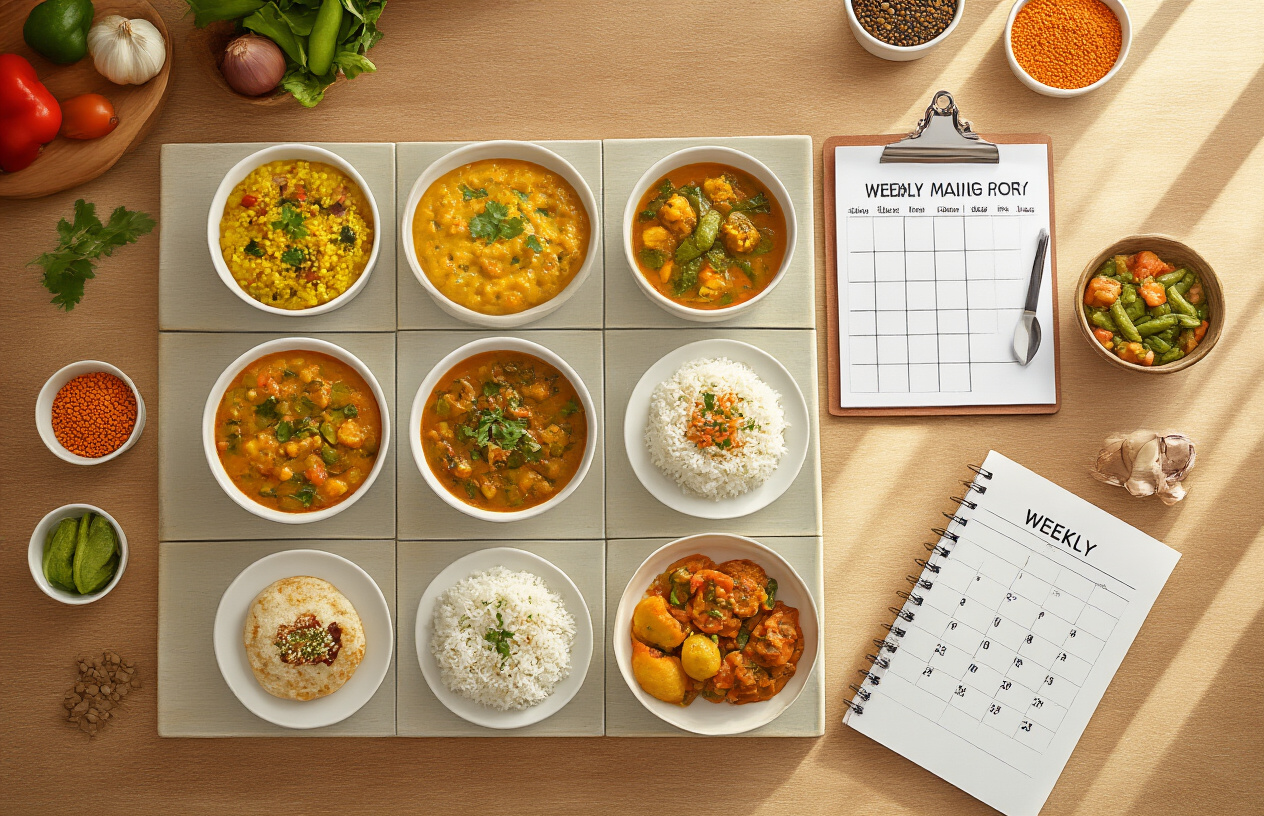
Breakfast Options from Idli to Poha
Start your day with traditional Kannada favorites that provide sustained energy for busy schedules. Idli with sambar and chutney offers complete protein when paired with lentil-based sambar, while poha serves as a quick, nutritious option rich in iron and easily digestible carbohydrates. Upma made with vegetables provides fiber and essential nutrients, perfect for meal prep. Dhokla with chutney delivers probiotics and plant-based protein. For weekend indulgence, try stuffed parathas with yogurt or moong dal chilla – both excellent protein sources that keep you full longer.
Nutritious Lunch Combinations with Dal and Rice
Create balanced lunch combinations using traditional dal-rice pairings that form complete proteins essential for busy professionals. Tuvar dal with rice provides sustained energy, while split green moong dal offers easier digestion during hectic workdays. Enhance nutrition with palak paneer and roti for iron and calcium, or rajma curry with roti for plant-based protein and fiber. Chickpea curry (chole) with roti delivers excellent protein content, while baingan bharta with roti adds antioxidants and fiber to your Karnataka-inspired meal planning.
Light Dinner Ideas with Vegetable Curries
End your day with lighter options that aid digestion while maintaining nutritional balance. Vegetable pulao combines multiple vegetables with rice for a one-pot meal rich in vitamins and minerals. Rassedar aloo matar with rice provides comfort food satisfaction with added protein from peas. Mixed vegetable biryani with raita offers complex carbohydrates and probiotics from yogurt. Lemon rice or tamarind rice with sambar delivers vitamin C and complete amino acids. These dinner options support your Kannada diet plan while accommodating busy evening schedules.
Healthy Snacking with Traditional Options
Bridge meal gaps with nutritious traditional snacks that align with your balanced diet goals. Sabudana khichadi with curd provides quick energy and probiotics, ideal for pre-workout fuel. Roasted fox nuts with spices offer protein and healthy fats without excess calories. Fresh fruit with nuts combines natural sugars with healthy fats for sustained energy. Carrot sticks with hummus or cucumber slices with mint chutney provide hydration and nutrients. These budget-friendly options support your busy lifestyle while maintaining traditional Karnataka flavors and nutritional requirements.
Addressing Protein and Vitamin B12 Needs
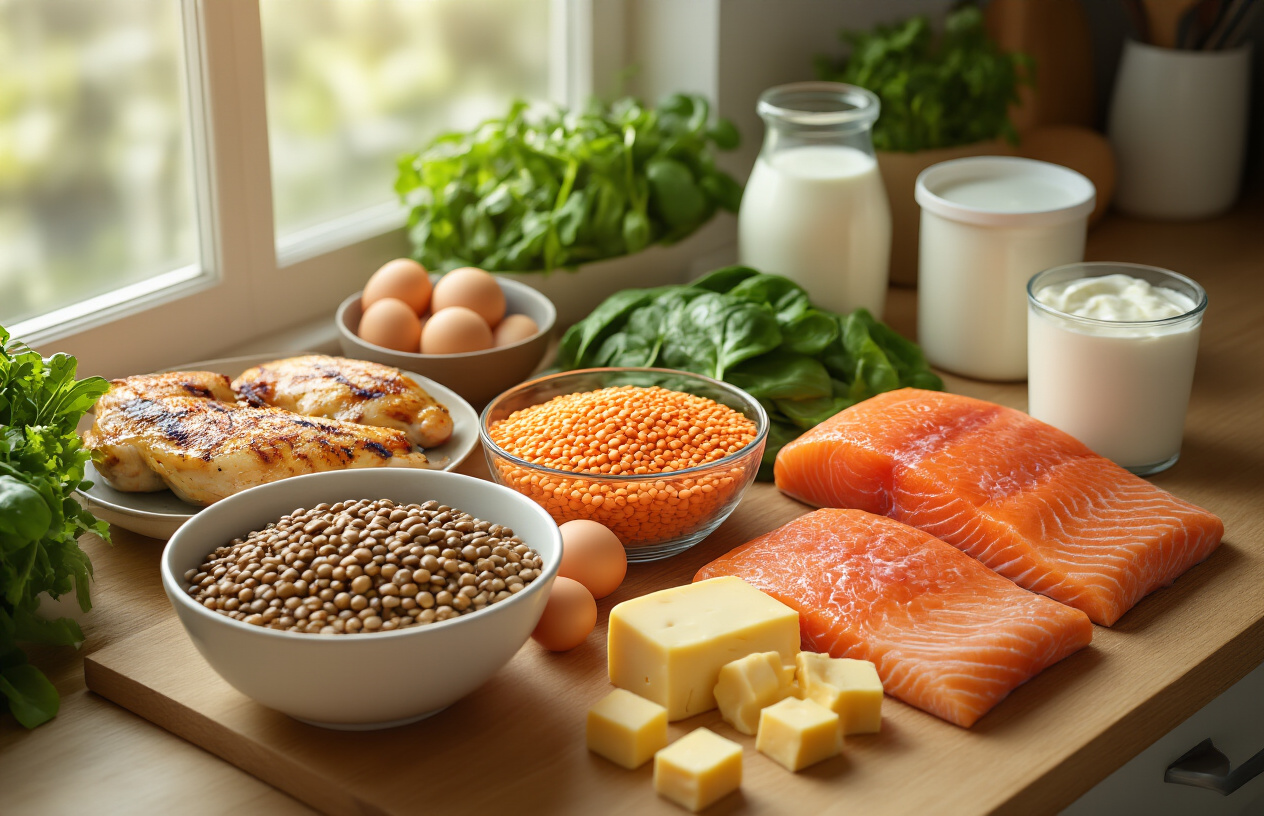
Vegetarian Protein Sources in Indian Cuisine
Traditional Kannada and South Indian vegetarian cuisine offers abundant protein-rich options that align perfectly with busy professionals’ dietary needs. Lentils (dal) serve as nutritional powerhouses, with moong dal providing approximately 14 grams of protein per cooked cup, while mixed legumes like chickpeas and black gram deliver 15-18 grams per serving. These staples can be easily incorporated into familiar dishes like sambar, rasam, and various curry preparations that are already part of Karnataka’s culinary heritage.
Non-Vegetarian Options for Complete Nutrition
For those following non-vegetarian diets within the Kannada meal planning framework, incorporating lean proteins becomes essential for meeting daily requirements. While plant-based sources form the foundation, strategic inclusion of fish, chicken, and eggs can help busy professionals achieve their protein targets more efficiently, especially when traditional vegetarian options may not provide sufficient quantities for highly active lifestyles or specific dietary goals.
Plant-Based Alternatives and Supplements
Modern plant-based alternatives complement traditional Kannada ingredients effectively. Soy milk provides 6 grams of protein per cup and can replace dairy in traditional preparations, while quinoa offers complete amino acid profiles with 8-9 grams per cooked cup. Chia seeds contribute 5 grams of protein per ounce and integrate seamlessly into traditional beverages like buttermilk or ragi porridge, making supplementation natural within existing meal patterns.
Balancing Nutrients Throughout the Week
Successful protein distribution requires strategic meal planning across seven days, ensuring variety prevents nutritional gaps. Morning meals combining moong dal chilla with Greek yogurt provide 22-25 grams of protein, while lunch featuring chickpea curry with whole wheat rotis delivers 25-27 grams. Evening combinations of paneer-enriched khichdi with leafy greens contribute 25-30 grams, creating sustainable daily totals of 70-80 grams through familiar Kannada flavors and preparation methods that busy professionals can maintain consistently.
Budget-Friendly Shopping and Preparation Tips
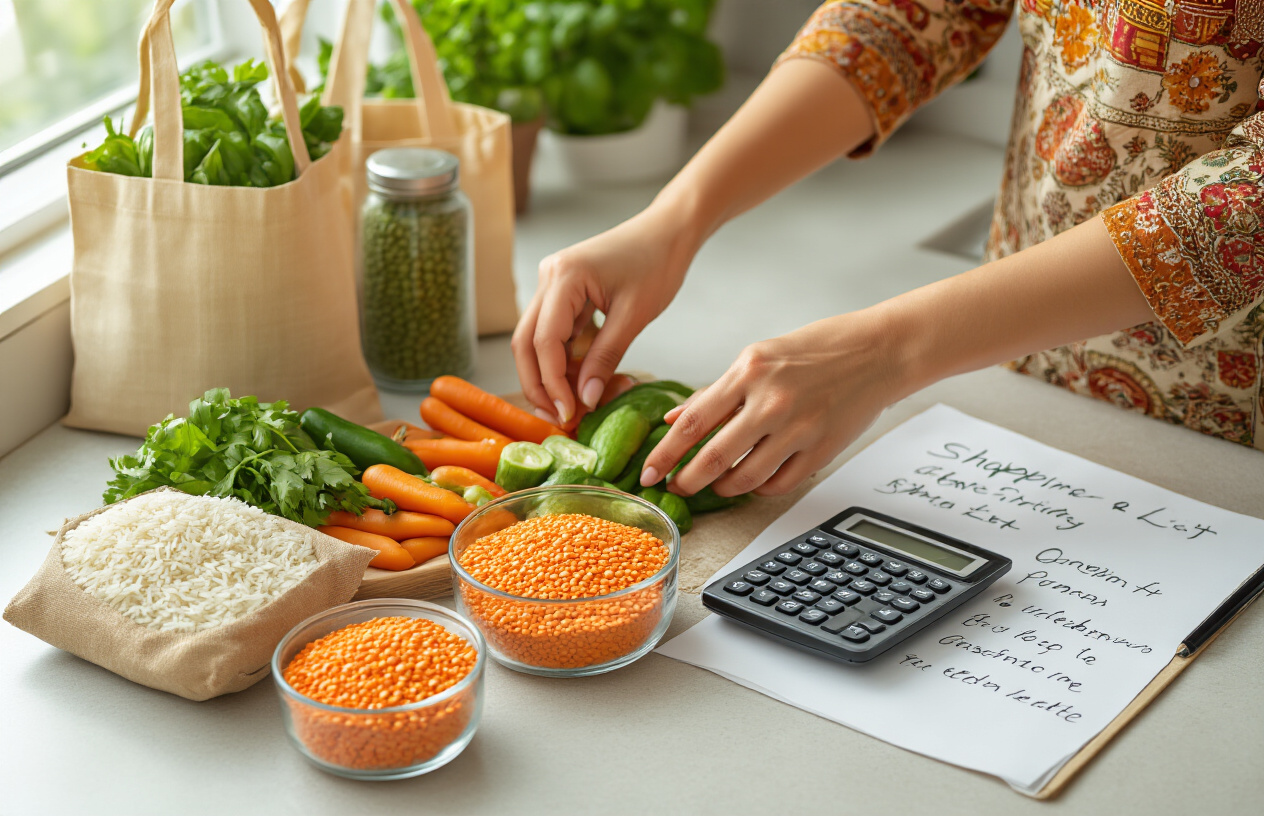
Cost-Effective Staple Ingredients to Stock
Now that we’ve covered meal planning strategies, let’s focus on building a budget-friendly pantry foundation. Stock up on versatile staples like rice, various lentils (dal), whole spices, chickpea flour (besan), and semolina (sooji) – ingredients that form the backbone of Kannada cuisine. These multi-use ingredients can be purchased in bulk at Indian grocery stores for significant savings compared to mainstream supermarkets.
Seasonal Produce Selection for Maximum Value
With this budget meal planning approach in mind, seasonal shopping becomes crucial for Kannada households. During summer months, stock up on mangoes for traditional desserts and chutneys, while winter brings affordable fresh spinach, mustard greens, and cauliflower – perfect for classic dishes like palak and gobi preparations that align with karnataka cuisine nutrition principles.
Bulk Buying Strategies for Lentils and Grains
Previously mentioned staples benefit greatly from bulk purchasing strategies. Buy rice, lentils, and whole spices in larger quantities and store them properly in airtight glass containers to maintain freshness and prevent pests. This approach reduces per-unit costs significantly while ensuring your pantry stays well-stocked with essential vegetarian protein sources india families rely on.
Homemade Alternatives to Processed Foods
Smart budget meal planning tips include replacing expensive processed items with homemade alternatives. Instead of store-bought snacks, prepare fresh items using your bulk ingredients – besan can create savory pancakes, while semolina works perfectly for upma. These healthy meal prep ideas not only save money but also provide better nutrition for busy lifestyle healthy eating goals.
Foods to Embrace and Avoid for Optimal Health
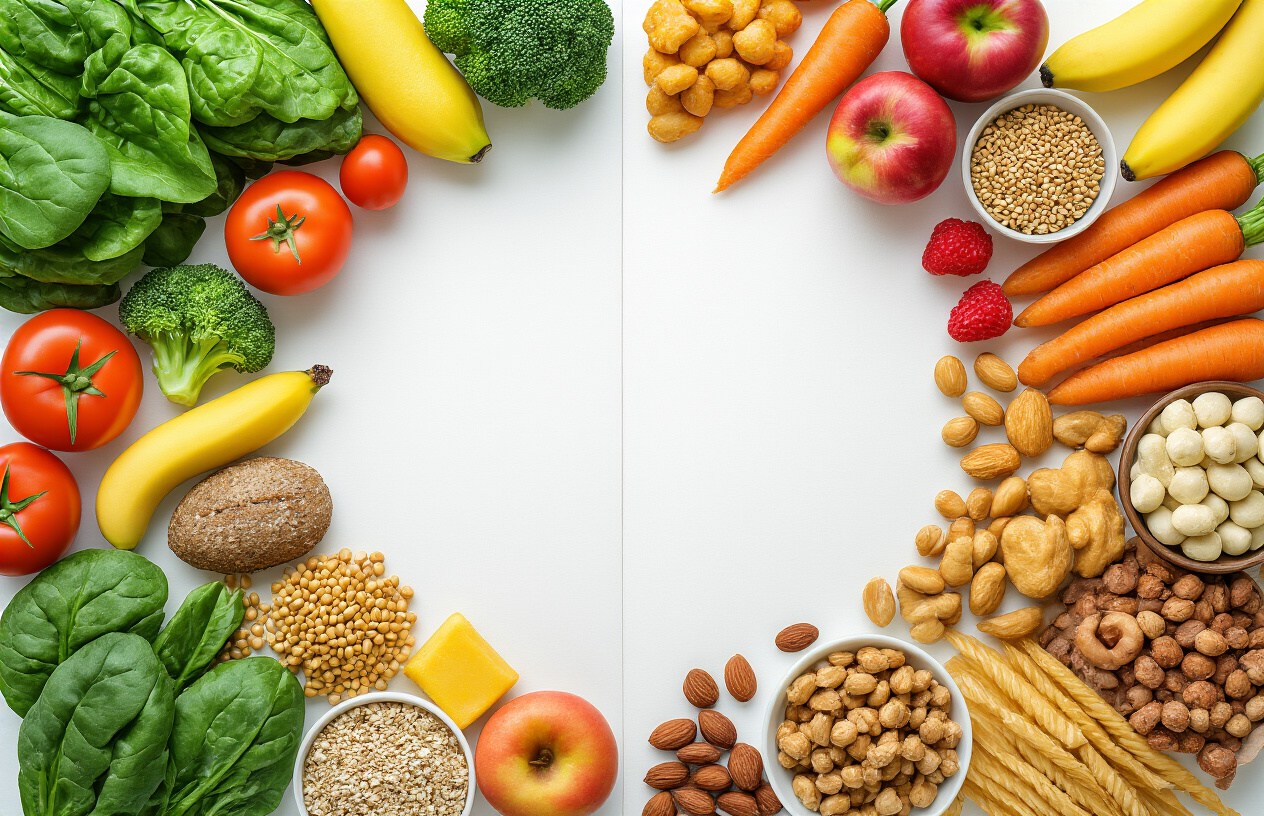
Nutrient-Dense Traditional Foods to Include
Traditional Indian foods form the cornerstone of a balanced Kannada diet, offering exceptional nutritional value. Roti made from whole wheat flour delivers 3-4 grams of protein and 2-3 grams of fiber per serving, making it an ideal staple for busy professionals. Dal varieties like toor dal, moong dal, and masoor dal provide 18-25 grams of protein per cup while offering 15-16 grams of dietary fiber. These lentil preparations serve as excellent vegetarian protein sources, supporting muscle maintenance and digestive health.
Vegetable curries such as bhindi masala and baingan bharta showcase how simple ingredients transform into nutrient powerhouses. These dishes deliver essential vitamins A, C, and K, along with powerful antioxidants that support immune function. Chickpea curry (chhole) offers 15 grams of protein per cup with 12 grams of fiber, making it perfect for quick meal preparation. Saag paneer combines iron-rich spinach with protein-dense paneer, providing approximately 14 grams of high-quality protein alongside folate, vitamin K, and beta-carotene.
Cooking Methods That Preserve Nutrition
Traditional cooking techniques maximize nutritional retention while creating flavorful meals. The tadka method involves tempering cumin seeds, mustard seeds, and curry leaves in minimal ghee before adding to dishes, creating depth of flavor without excess calories. Roasting vegetables like eggplant over open flame for baingan bharta develops smoky flavors while preserving antioxidants and potassium content.
Light sautéing and steaming preserve water-soluble vitamins while maintaining vegetable textures. Using natural moisture from tomatoes and onions reduces oil requirements in vegetable curries. Cooking lentils until tender breaks down proteins for better digestibility while maintaining their fiber content. These mindful cooking practices follow centuries-old traditions that prioritize both taste and nutritional value.
Processed Foods and Unhealthy Options to Limit
While traditional home-cooked meals emphasize whole ingredients, certain preparations should be consumed sparingly. Restaurant-style dishes often contain excessive oil, cream, and butter to enhance flavor and shelf life, significantly increasing calorie content. Deep-fried street foods like samosas and pakoras, though culturally significant, represent processed options that don’t align with daily nutrition goals.
Commercial curry preparations and pre-packaged spice mixes frequently contain added preservatives and sodium. Refined flour products lack the fiber and nutrients found in whole wheat alternatives. Excessive use of ghee and oil in cooking transforms otherwise healthy ingredients into calorie-dense preparations that may not support busy lifestyle requirements.
Hydration and Healthy Beverage Choices
Proper hydration complements nutrient-dense traditional foods in supporting optimal health. Water remains the primary beverage choice, supporting digestion of fiber-rich lentils and vegetable curries. Traditional buttermilk provides probiotics that aid in protein absorption from dal and paneer dishes. Fresh coconut water offers natural electrolytes, particularly beneficial after consuming spiced preparations.
Herbal teas made with traditional spices like cumin, coriander, and curry leaves support digestive health while providing antioxidants. Avoiding sugary beverages and excessive caffeine helps maintain stable energy levels throughout busy days. These beverage choices complement the balanced nutrition provided by traditional Kannada foods while supporting hydration needs for active lifestyles.
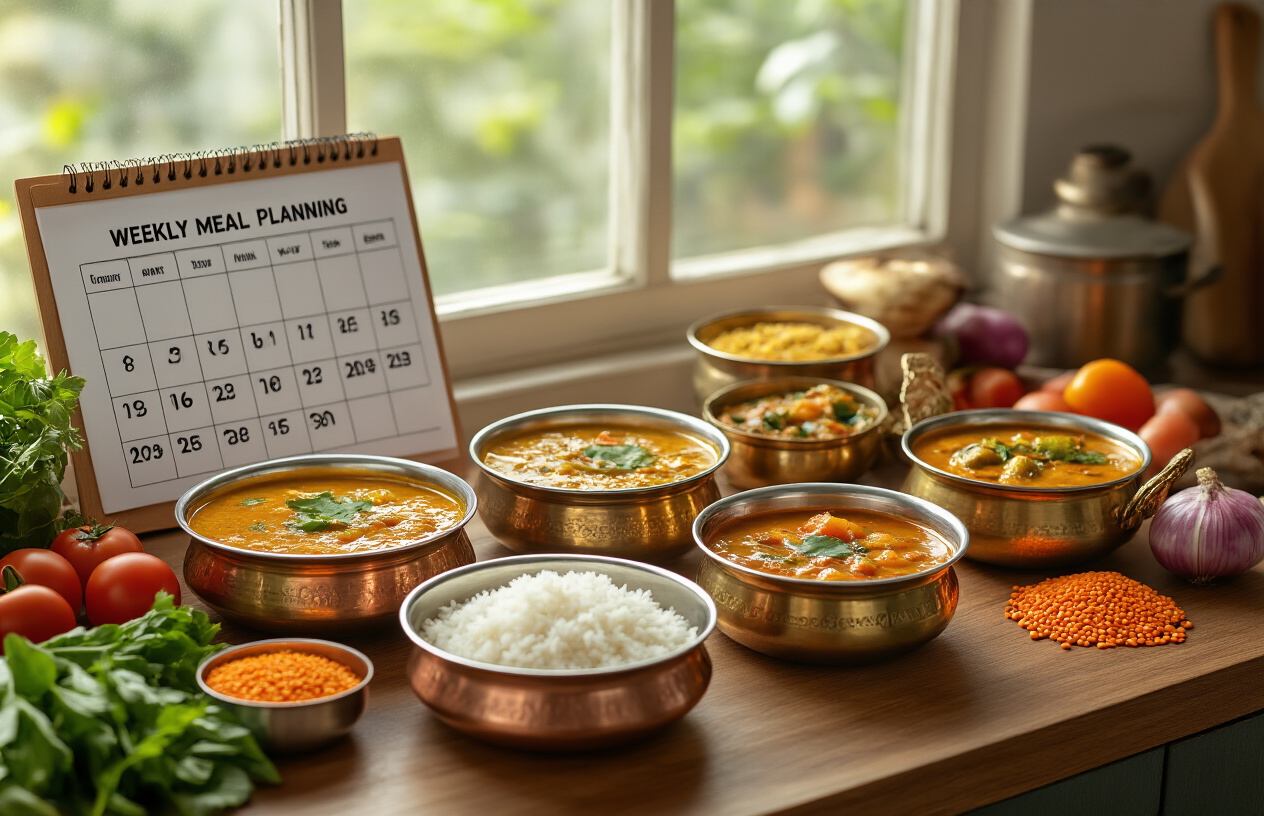
Maintaining a balanced diet while juggling busy schedules doesn’t have to mean compromising your health or cultural food preferences. By incorporating Kannada favorites into well-planned meals, focusing on protein-rich foods like dal, paneer, and seasonal vegetables, and addressing specific nutritional needs like Vitamin B12, you can nourish your body effectively. Smart meal planning strategies, budget-friendly shopping tips, and knowing which foods to embrace versus avoid will set you up for long-term success.
Start implementing these meal plans gradually, beginning with one or two days per week before expanding to the full 7-day cycle. Remember that consistency matters more than perfection – even small changes like swapping refined grains for whole grains or adding more colorful vegetables to your plate can make a significant difference. As with any dietary change, consult with a healthcare professional or registered dietitian, especially if you have specific health conditions or severe nutritional deficiencies that may require supplementation alongside these meal plans.